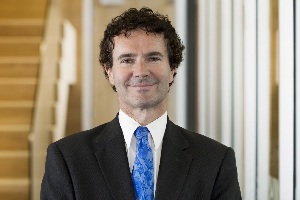
by Sally Lindsay

At the moment there is confusion about how banks have raised their fixed mortgage rates recently despite the Reserve Bank stating in May that it didn’t feel rates needed to go any higher.
In spite of its position not changing last week, which was completely factored into financial market pricing of fixed rate debt, banks raised their fixed rates again.
“When a bank lends at a two-year fixed rate, it does not fund that loan by borrowing at a floating rate. That is dangerous because if floating rates should rise because of new inflation concerns its profit will be slashed.
“The bank will fund the loan by borrowing at a two-year fixed rate in the wholesale market. This is called the swap rate. If the two-year wholesale interest rate goes up, then a bank will eventually raise its two-year fixed lending rate. But this does not happen immediately.
“The two-year swap rate rose from 5% in the second week of May to almost 5.6% in the first week of July.
“This 0.6% rise was not driven by new inflation worries in New Zealand. There has, in fact, been good declines in local gauges of inflation expectations and capacity pressures.
“Instead, the rise in local borrowing costs has been driven by higher interest rates in the United States.
“US wholesale borrowing costs increased through June into July in response to surprisingly strong data on the labour market, mainly. The markets moved to pricing in more increases in the US Federal Reserve’s funds rate than had been the case before. The US two-year Treasury note yield rose from 4.14% at the start of May to a peak of 5% on 6 July. It is now near 4.75%.
“So, the short-term fixed mortgage rates, which most people are interested in and borrow at in our tiny economy, are influenced mainly by changes in the official cash rate, developments in the United States, and changes in bank margin goals.
“Sticking with the two-year period the important point to note with regard to the influence of the Reserve Bank’s official cash rate is:
“Floating deposit rates (let’s say for 90-days and less) are hugely influenced by the current level of the official cash rate.
“Swap rates rise before monetary policy tightens. That is why in 2021, during the period between January and early-October when the cash rate was 0.25%, the one-year fixed mortgage rate rose from 2.29% to 3.19%. The two year rate rose from 2.49% to 3.59%.
“This becomes important now. Current fixed interest rates reflect expectations for what the official cash rate will do over the next one to five years.
“The markets are pricing in no easing of monetary policy until late next year. The chances are this expectation will shift in coming months towards expecting an easing of monetary policy well before then.
“When that happens, even though the Reserve Bank will still be many months away from cutting the cash rate, fixed rates will fall. These falls look likely before the end of the year.”
| « Mortgage rate cuts a way off yet | Inflation could be normalising above 2% » |
Special Offers
No comments yet
Sign In to add your comment

© Copyright 1997-2024 Tarawera Publishing Ltd. All Rights Reserved